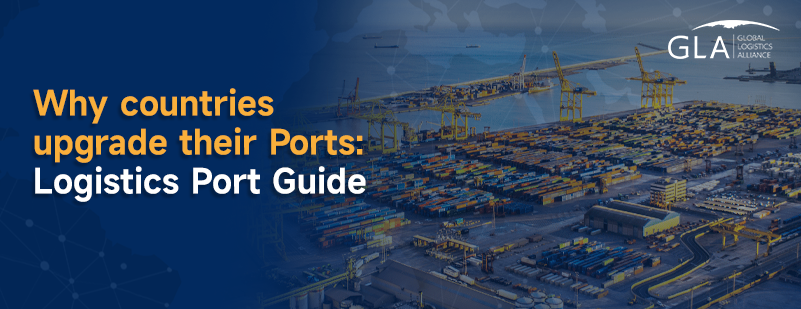Welcome to GLA! Leading the global logistics alliance.


Your location:Home > News > Why Countries Upgrade their Ports: A Logistics Port Guide
Time:2024-03-12 Publisher:Kevin Num:7212

Ports serve as crucial gateways for global trade, facilitating the movement of goods and bolstering economic growth. In recent times, the spotlight has increasingly turned towards port upgrades, with countries like the United States spearheading substantial investments in port infrastructure. The Biden administration's commitment of $21 billion towards modernising port facilities reflects a strategic recognition of the importance of ports in enhancing trade efficiency and competitiveness.
In the United States, midsize port cities such as Baltimore have emerged as focal points for infrastructure revitalization efforts. The Port of Baltimore, a key player in the nation's maritime landscape, recently secured a significant boost with a $47 million grant allocated for various improvements. This funding encompasses initiatives ranging from establishing an offshore wind manufacturing hub to constructing a new berth tailored for handling rolling cargo, consolidating Baltimore's position as the leading destination for such imports in the U.S.
The Port of Baltimore's success story is not isolated; it mirrors a broader trend of substantial federal investments in port upgrades nationwide. In 2023 alone, the U.S. Department of Transportation, Maritime Administration allocated over $653 million in grants to bolster port infrastructure across the country. Projects such as the Port of Tacoma Husky Terminal Expansion in Washington state and the North Harbor Transportation System Improvement Project in Long Beach, California underscore the diverse array of initiatives aimed at enhancing port capabilities and efficiency.
Furthermore, port upgrades are not limited to enhancing cargo handling capacities; they also encompass environmental and strategic considerations. Initiatives supported by agencies like the Environmental Protection Agency target reducing truck idling and mitigating environmental impacts, aligning port development with sustainability goals. Similarly, investments from the U.S. Department of Defense to deepen waterways on the East Coast reflect broader geopolitical imperatives aimed at bolstering maritime security and strategic capabilities.
Public-private partnerships have emerged as instrumental vehicles for driving port upgrades, exemplified by Ports America's collaboration with Maryland to manage operations at sections of the Port of Baltimore. With $550 million invested in upgrades at the Seagirt Marine Terminal alone, such partnerships underscore the pivotal role of private sector involvement in advancing port infrastructure agendas.
Beyond enhancing maritime infrastructure, port upgrades serve as catalysts for broader economic revitalization efforts. Baltimore's ambitious plans to address supply chain bottlenecks extend beyond the port, encompassing projects like the Howard Street Tunnel expansion to augment rail capacity. By integrating port improvements with broader urban renewal initiatives, policymakers seek to rejuvenate declining industrial cities and unlock their economic potential.
In conclusion, the drive to upgrade ports reflects a strategic imperative to bolster trade efficiency, enhance competitiveness, and foster economic development. From multimillion-dollar grants to innovative public-private partnerships, investments in port infrastructure underscore a concerted effort to navigate the complexities of global trade while positioning countries for sustained prosperity in an interconnected world.
Prev:Welcome! New Golden Member from Poland ———— Easy Cargo Sp. z o.o.Next:How to Minimise Last Mile Cost by Maximising Supply Chain Management
Recommended Membership
Latest News